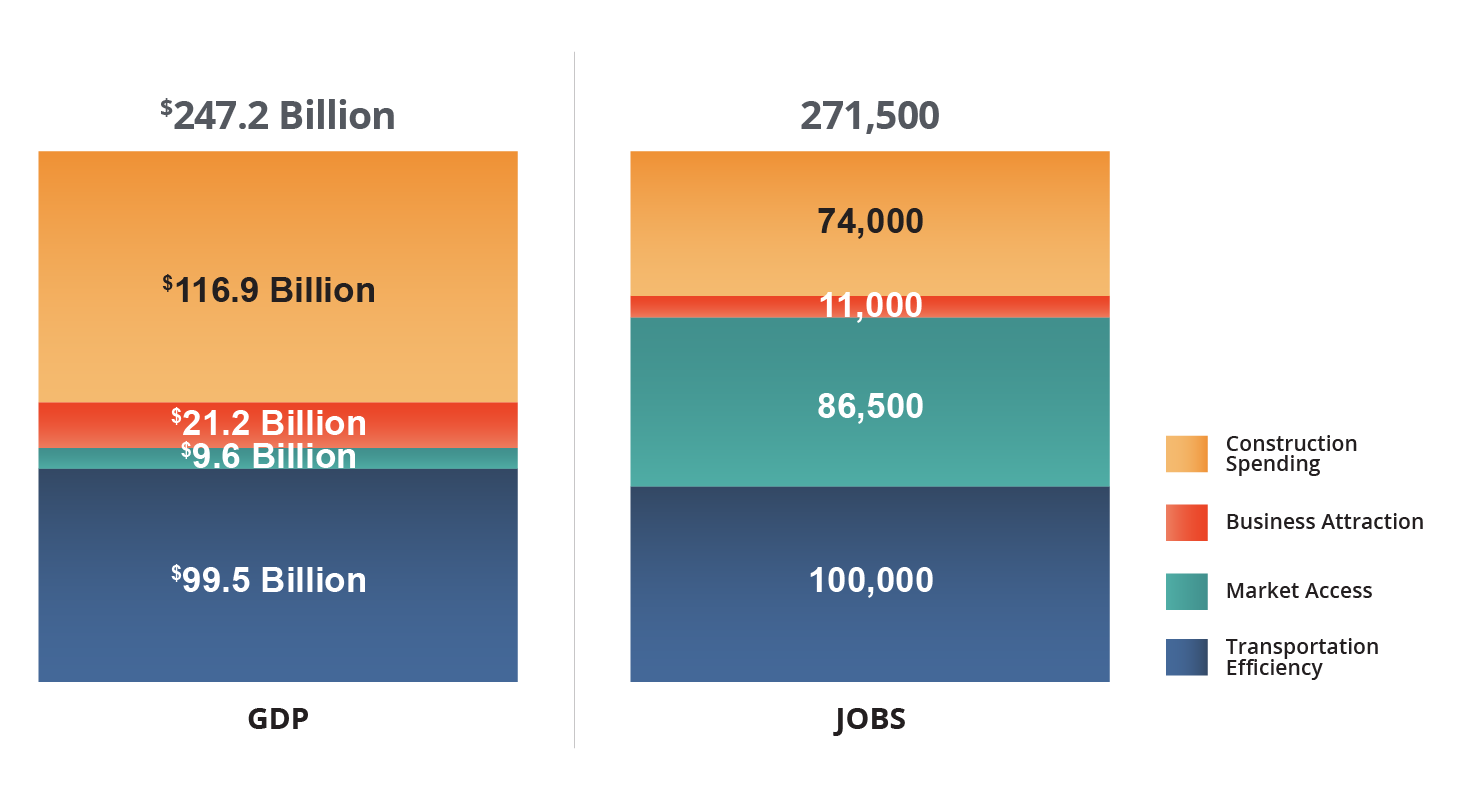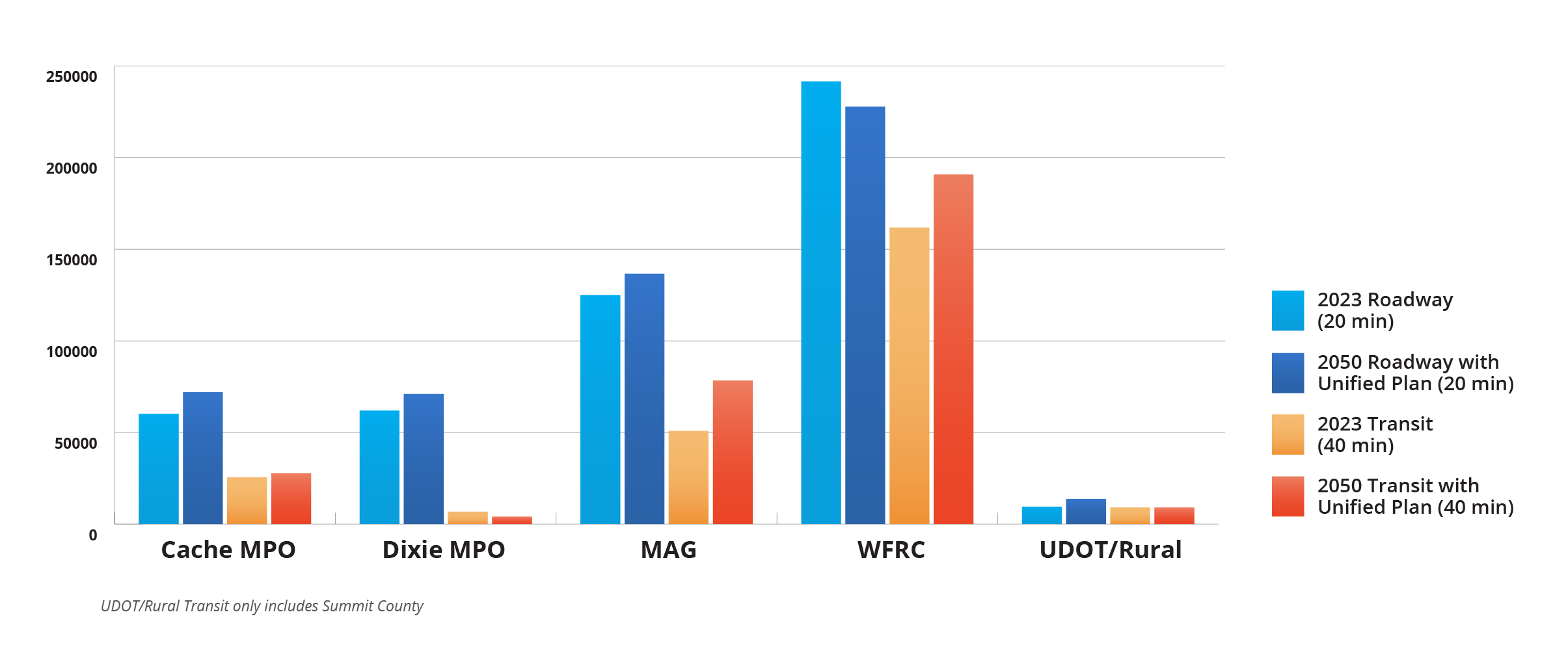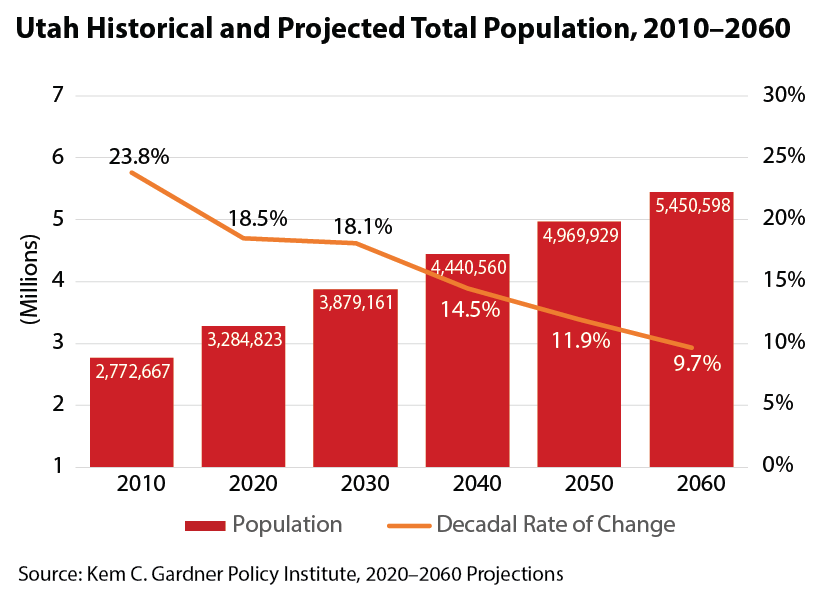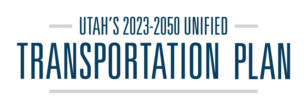Strong Economy
Transportation plays a vital role in the success of business and commerce. A well-functioning transportation system is the backbone of a robust economy. It connects people to jobs and other destinations and facilitates efficient movement of goods and services within communities and across the state.
Jobs are plentiful in Utah with an annual job growth of 3.0% for the fiscal year ending in June 2023, according to the Utah Department of Workforce Services. According to rankings by US News and World Report in July 2023, Utah’s economy is the best in the nation. It is also one of the fastest-growing states. This translates to an economic environment that is expected to have long-term stability and sustainability. However, this growth places additional demands on the transportation system, and we need to plan to accommodate and help sustain this growth.
Economic Impact
An economic analysis commissioned by the Unified Plan partners identified specific benefits that can be expected from investing in the 2023-2050 Unified Plan. The analysis found that each dollar invested in transportation improvements outlined in the Unified Plan will increase 2.5 times through economic growth and jobs added. Implementing the Unified Plan will result in $247.2 billion in total GDP increases in Utah’s economy in 2050. This number includes $116.9 billion stimulated from construction spending and $99.5 billion created by efficiencies in the transportation system. $9.6 billion can be attributed to enhanced access to markets for Utah companies, and $21.2 billion from new businesses relocating to Utah.
The analysis also found that implementing the Unified Plan will result in 271,500 new jobs in Utah’s economy in 2050, including 74,000 construction jobs and 100,000 jobs created by efficiencies in the transportation system. 86,500 new jobs will be attributed to enhanced access to markets for Utah companies and 11,000 jobs from new businesses relocating to Utah, in part because of a well-functioning transportation system.
Economic Impact Created by Unified Plan Investment

The analysis also showed that the Unified Plan will significantly improve the ability of businesses to reach a greater workforce and customer base. The graph below specifically shows how access to job opportunities would increase in the four most populated regions of the state by 2050.

The Human Side: Shibu
Shibu is originally from New Delhi, India, and has been in the United States for two years. He loves attending Ensign College and decided to pursue higher education in the United States because he sees it as the land of opportunity. He still runs one of his companies in India and works part-time in the sales and marketing department at Ensign College.
Shibu doesn’t have a driver’s license, so he uses his free UTA Student Ed Pass to go everywhere. He says he loves FrontRunner because he gets to meet new people and visit his friends in Sandy and Provo. Shibu’s experience traveling by train in Utah has changed the way he views transportation. Although he never used the Metro Train or buses in India because he had his own car, he now plans to take advantage of the public transit benefits he has experienced in Utah when he returns home.
Job Access Impacts

Population Growth and Increased Mobility Demands
Utah is growing, aging, urbanizing, diversifying, and changing. The state’s population is projected to climb from the current population of 3.4 million to 5.4 million by 2060. That works out to more than 50,000 new people per year well into the future. How will we continue to get around with ease? We’re not just growing, either; we’re diversifying. We are expecting to see large increases in both older and younger segments of our population. This growth has brought Utah many new opportunities, such as record low unemployment and tax revenue sufficient to invest in infrastructure. However, it has also brought challenges, such as traffic congestion. Transportation is also closely related to housing affordability and access in Utah. This is a top concern of many Utahns. How can we meet the variety of transportation and housing needs we’ll face as our population changes and grows? This is another factor addressed by the Unified Plan.

The Human Side: Norval
When Norval first delivered Utah petroleum in 1979, he endured rough travel on dirt roads through high-desert oil fields in uncomfortable and unreliable trucks. Fortunately, equipment, roadways, and transportation technologies evolved over 40 years, and Norval’s work conditions are more comfortable and efficient these days. When Norval delivers propane from Roosevelt in his powerful big rig to places like Craig, Colorado, or Sundance Ski Resort, he doesn’t worry about holding up traffic on steep inclines since there are passing lanes that allow other vehicles to get by. Norval also uses the UDOT traffic app to view live roadway camera images before heading on his deliveries. He can delay distant routes and stick closer to home if he sees questionable road conditions.
Norval mostly delivers to vacation rental properties in rural areas without natural gas pipeline access. As long as Norval’s propane keeps the vacationers warm, his clients are happy. And happy clients have allowed Norval to work through the Uintah Basin’s economic highs and lows while he and his wife, Gaylene, raised four children in their Neola, Utah, home near extended family. It’s a great life supported by a successful career sustained by Utah’s transportation system.
